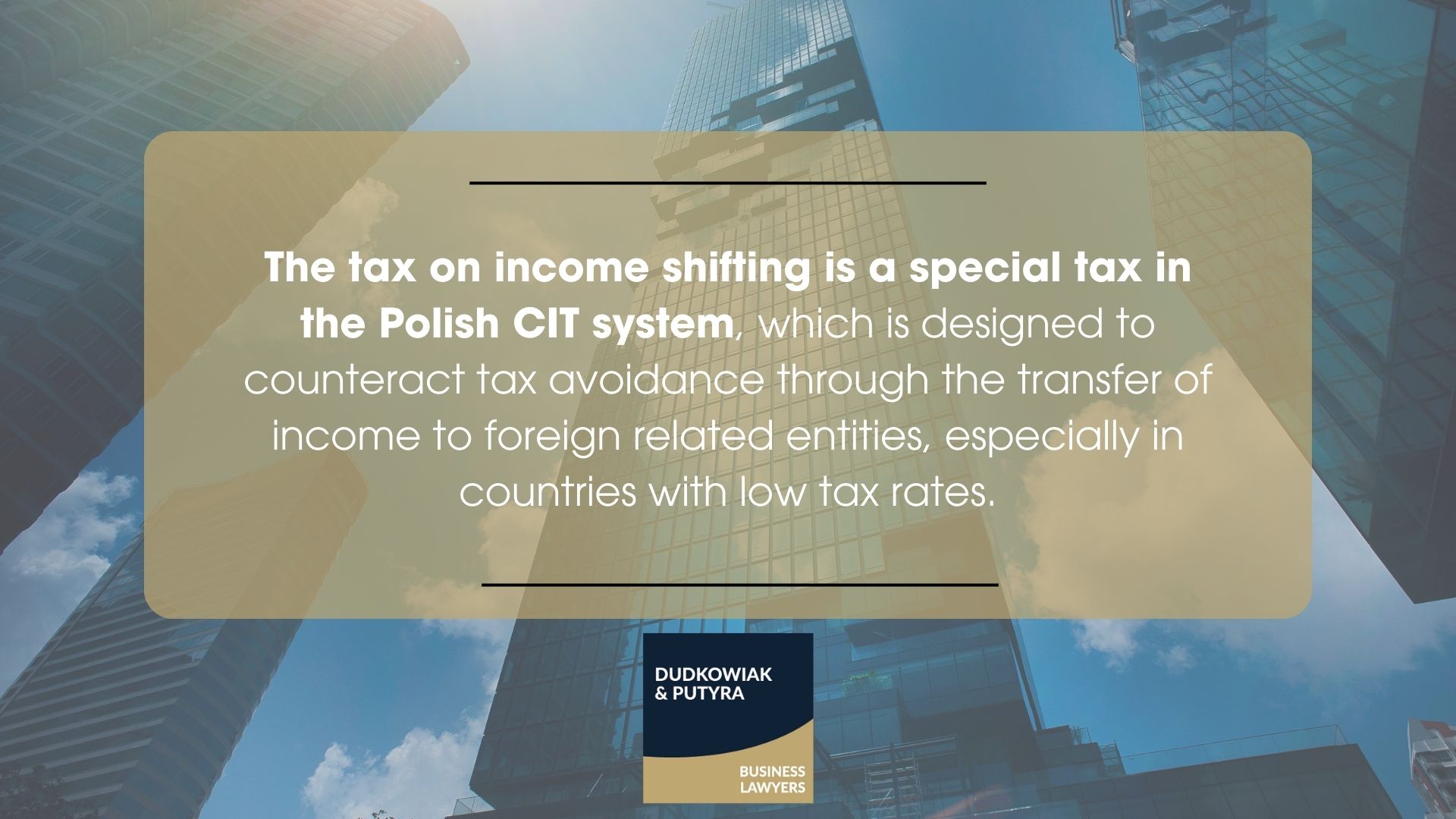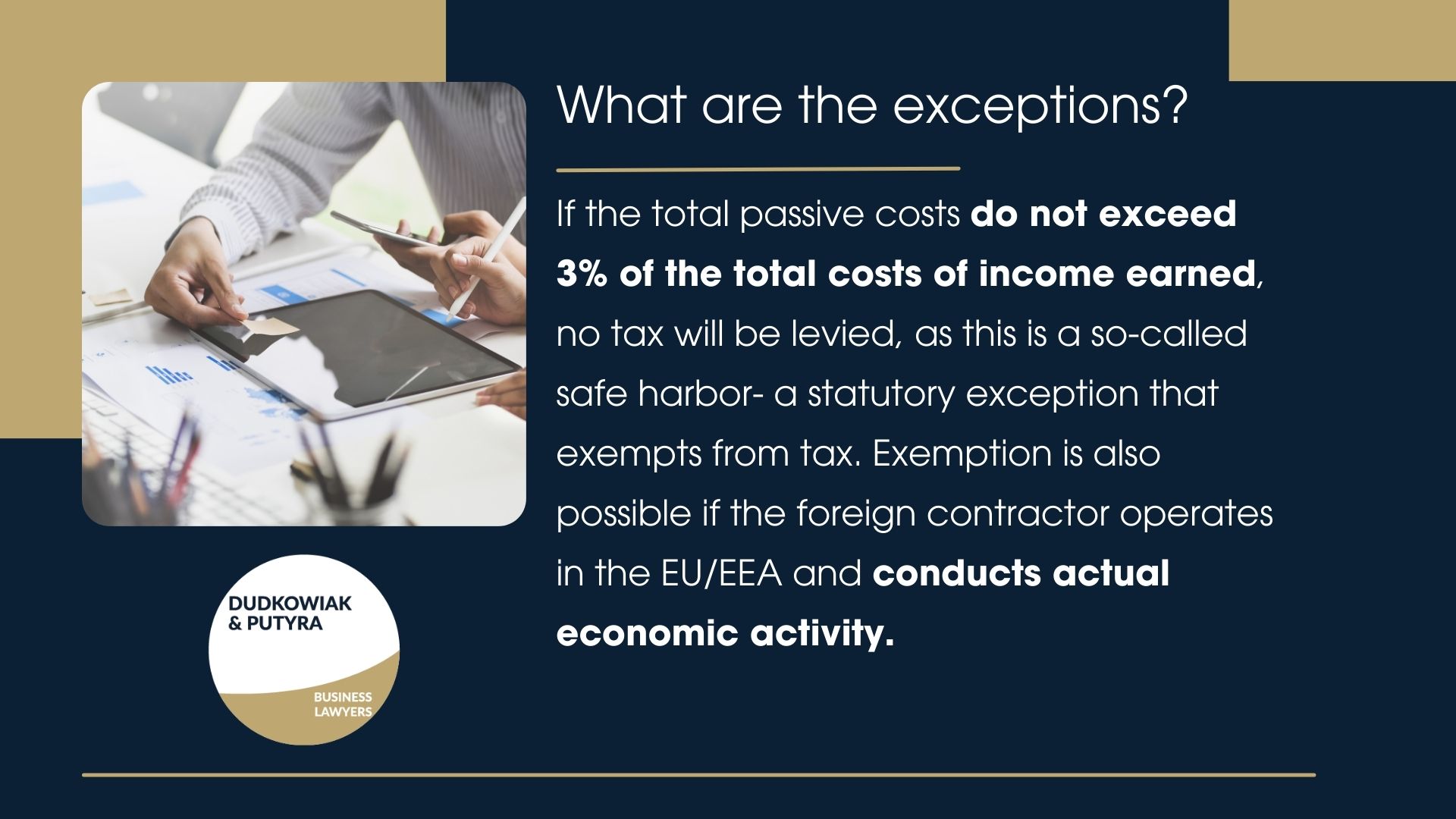Tax on income shifting- tax explanation from the Ministry of Finance
On September 9, 2025, the Minister of Finance issued tax clarifications regarding the tax on income shifting.
The tax on income shifting is a special tax in the Polish CIT system, which is designed to counteract tax avoidance through the transfer of income to foreign related entities, especially in countries with low tax rates.

What is the tax on income shifting?
Pursuant to Article 24aa of the CIT Act, this tax is imposed on Polish CIT taxpayers who incur certain costs for foreign related entities, and these costs are classified as tax-deductible costs.
In our article, we discuss, among other things:
- the tax base and the method of recognizing tax-deductible costs (e.g., depreciation write-offs, debt financing costs).
- the grounds for taxation on the part of foreign entities.
- the rules for calculating the effective tax rate and testing the 10% transferred revenue criterio.
- practical consequences for Polish taxpayers and related entities.
Who is liable for the tax on income shifting?
The taxpayer of tax on income shifting (Article 24aa of the CIT Act) is a corporate income tax payer with its registered office or management board in Poland (or a Polish branch of a foreign entity) which:
- incurs tax-deductible costs for the reasons specified in the Act (e.g., intangible services, license fees, debt financing),
- pays them to a related entity that has its registered office, management, or tax residence outside of Poland,
- and the total amount of these costs in a given tax year exceeds the statutory threshold (PLN 3 million or 5% of EBITDA, depending on the settlement option).
A Polish company (or Polish establishment) making payments to a related entity based abroad is a taxpayer if the conditions for “income shifting” to a country with preferential taxation or a lower effective tax rate are met.
- Polish CIT taxpayer– A company with its registered office or management board located in the Republic of Poland. This is the basic group of taxpayers subject to this tax.
- Non-resident through a Polish establishment- A foreign entity (without its registered office/management in Poland) that conducts business activity through an establishment located in Poland. In this case, income related to the activity of this establishment is subject to taxation.
- Tax Capital Group (PGK)- PGK as a whole is a separate CIT taxpayer and may also be subject to tax on transferred income if it meets the conditions specified in the Act.
- Partnerships in which a CIT taxpayer is a partner- in the case of payments made by partnerships, the tax obligation may apply to a partner who is a CIT taxpayer.
In what situations will a tax liability arise?
- A Polish CIT taxpayer will be subject to tax if they include costs that meet the criteria for “pass-through income” in their tax-deductible costs.
NOTE: this also applies to the costs of a company that is not a legal entity (e.g., a partnership), provided that the Polish taxpayer settles them for CIT purposes.
- A non-resident through a Polish establishment will be subject to tax if it includes costs meeting the conditions of “transferred income” in the establishment’s settlement.
- PGK will be subject to tax at the PGK level (in its consolidated settlement) if there are costs within the group that meet the conditions of “transferred income.”
NOTE: PGK member companies are not separate taxpayers for this tax as long as PGK has its status. After losing its status, each company settles the tax independently according to general rules.
What costs does the income shift cover?
Costs that:
- are included in the catalog of intangible services (consulting services, market research, advertising services, management and control, data processing, insurance, guarantees, and sureties), license fees (including , among others, IP) or financing costs
- have been included in tax costs, in a given year exceed 3% of all tax-deductible costs (the so-called safe harbor),
- are incurred for the benefit of related entities based outside Poland,
- at the same time indicate a transfer of income– e.g., a foreign entity pays low tax, most of its revenue comes from such services provided to Polish companies, and it transfers a significant portion of these funds to other related companies.
This tax may also cover:
- indirectly paid costs- when they go through other companies to entities that meet the conditions for “transferred income,”
- costs incurred for companies from tax havens.
It is worth remembering that even if a payment does not go directly to an affiliated company but ultimately ends up there (or in a tax haven), it may also be subject to tax.
How do I know that I am required to pay tax on income shifting?
Reasons on the part of the foreign related entity
The tax is imposed if the contractor meets all three conditions:
- Low tax rate– effective taxation of passive income <14.25% or tax exemption.
- Dominance of passive income– at least 50% of total income is income from passive services/costs (e.g., from Polish entities).
- Transfer of at least 10% of passive income to other related entities.
What are the exceptions?
If the total passive costs do not exceed 3% of the total costs of income earned, no tax will be levied, as this is a so-called safe harbor- a statutory exception that exempts from tax.
Exemption is also possible if the foreign contractor operates in the EU/EEA and conducts actual economic activity.

What are the taxpayer’s obligations?
From 2023, it will be the taxpayer’s responsibility to prove that at least one of the conditions is NOT met.
- Low tax rate– effective taxation of passive income < 14.25% or total tax exemption.
- Dominance of passive income– at least 50% of the total income of a given entity comes from so-called passive sources (including intangible services, license fees, debt financing).
- Pass-through of at least 10%- the related entity transfers at least 10% of its passive income to another related entity (e.g., in the form of costs, deductions, dividends, share in profits).
In its explanations, the Ministry of Finance emphasizes that the analysis should be performed annually and that passive cost documentation should be kept accurately. The tax is reported and paid in the annual CIT return.
How to check your obligation- practical steps
Step 1. Is the cost included in the statutory catalog? (point 1)
Step 2. Has it been included in the costs of income earned and exceeds the 3% threshold?
Step 3. Does the foreign contractor meet the following conditions:
- low tax,
- less than 50% passive income
- transfer ≥10% further?
If the answer to even one of the above questions is YES, we are required to pay tax.
If NO, we document the reasons for not being required to pay tax.
The tax also covers payments hidden in transaction chains. Companies must establish procedures for verifying related contractors (e.g., information on tax rates, revenue structure). Lack of analysis = tax risk and additional CIT.
Are you unsure whether your company is subject to transfer pricing tax?
Contact our law company– we will help you analyze your cost structure, verify your obligations towards foreign contractors, and prepare secure tax documentation.

